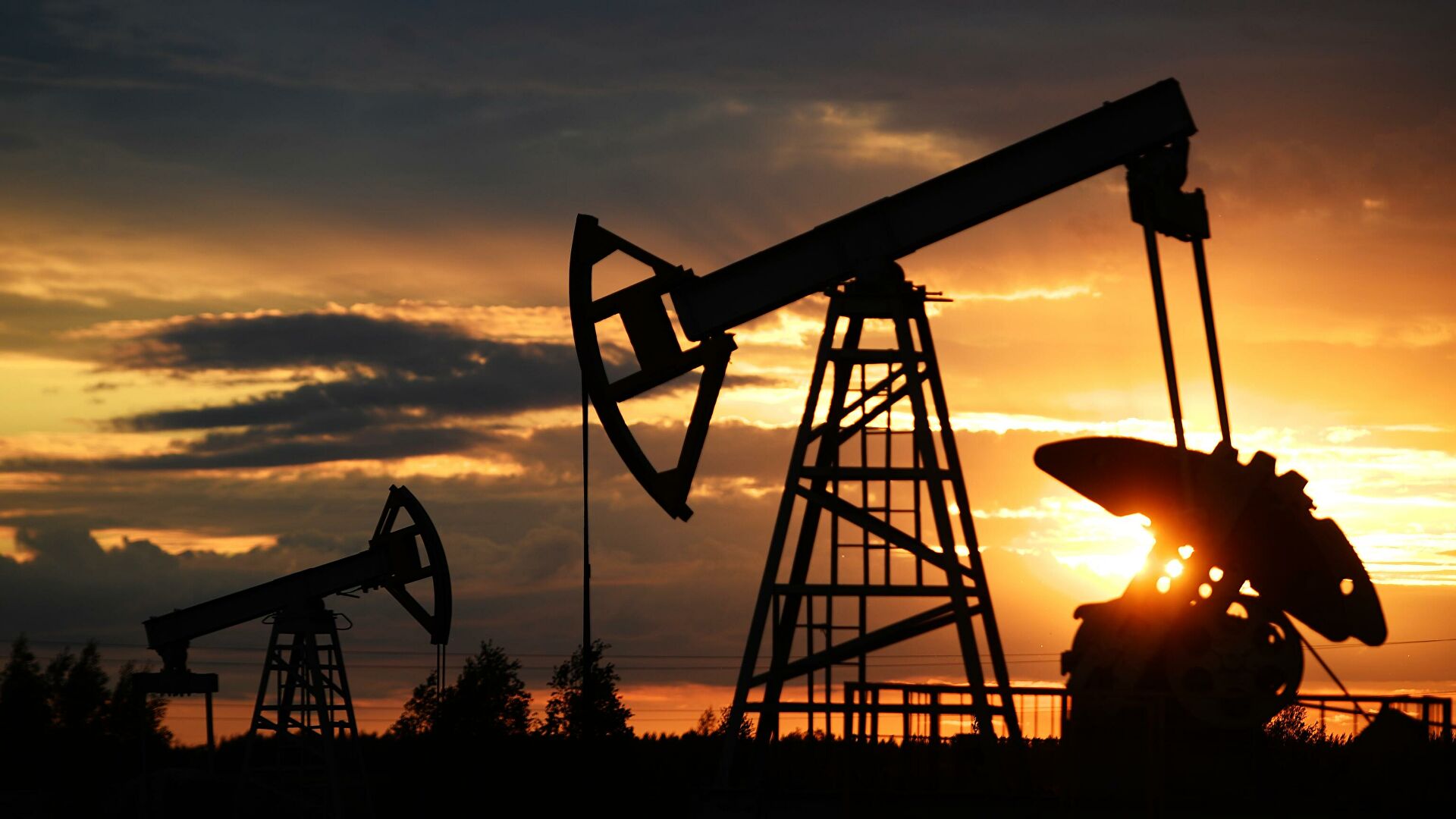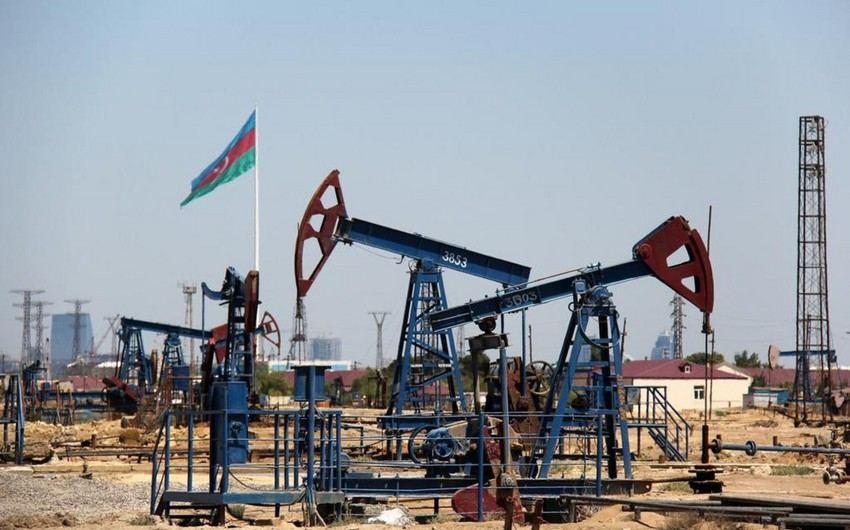Rising geopolitical tensions push oil prices higher Azerbaijan keeps on the sunny side
Global oil prices have risen this week amid heightened geopolitical tensions and fears of disrupted supplies. May Brent futures, for instance, hit $86.82 a barrel on London's ICE Futures exchange. The rising prices come amid escalating tensions in the Middle East, the Russian-Ukrainian conflict, which is also affecting Russia's production, and declining US oil reserves. The policy of financial regulators in the US and Europe to lower interest rates, which will support the industrial and consumer sectors, will also contribute to the rise in hydrocarbon prices in 2024. Nevertheless, global demand for energy resources and rising prices for Azerbaijan's oil are benefiting local businesses.
In the first half of last year, the global commodity market experienced a high level of volatility in oil prices due to negative processes in the world economy and the global recession in Europe, North America, Japan, China and many other countries in the Asia-Pacific (AP). In particular, the fight against inflation, which forced the central banks of the world's leading countries to raise interest rates sharply, contributed to the decline in GDP growth rates in the world's leading countries. This led to a slowdown in investment, production and consumer demand as the cost of borrowed funds rose. All this ultimately reduced global demand for hydrocarbons last year. Notably, the global commodity market also experienced a period of uncertain demand and energy price volatility in January and February 2007.
Against the background of the escalation of the Palestinian-Israeli conflict in the Gaza Strip last autumn, which triggered the unblocking of a number of other hotspots in the Middle East, some upward correction in oil prices was observed. In particular, since mid-November last year, the Yemeni rebel movement Ansar Allah has launched drone and anti-ship missile (ASM) attacks on cargo ships and oil tankers transiting the waters of the Red Sea and the Bab el-Mandeb Strait. The situation around oil transhipment through the Suez Canal remains tense despite the response of the international coalition formed by the US and the UK.

The impact of the Middle East conflicts overshadows the ongoing Russian-Ukrainian war, now in its third year, and sanctions restricting exports of Russian oil and other energy resources, including to the European market. Meanwhile, according to analysts at StoneX, eight recent attacks by Ukrainian drones on Russian refineries have reduced Russia's refining capacity by around 400,000 barrels per day. Overall, according to some reports, the decline in the oil industry in Russia alone could be as high as 30 per cent, taking into account last year and this year.
Commodity markets are undoubtedly very sensitive to conflicts and wars, other manifestations of global geopolitical confrontation, which are immediately reflected in spot or futures quotes. However, the key factors influencing oil prices are still fundamental economic processes that shape long-term demand.
Therefore, towards the end of the first quarter of this year, oil market trends began to favour higher prices, and the International Energy Agency's (IEA) mid-March forecasts became a conditional starting point for this process. According to IEA estimates, oil consumption in the first quarter of 2024 was raised by 400 thousand barrels per day (bpd) to 102 million bpd, and the forecast for the second and third quarters was raised by 200 thousand bpd to 103 and 104 million bpd respectively.
"Investors are expecting tangible fuel demand from China, while the ongoing OPEC+ supply cuts mean there is a possibility of a supply shortage," said Fawad Razaqzada, analyst at City Index and Forex.com.
The impact of the Middle East conflicts overshadows the ongoing Russian-Ukrainian war, now in its third year, and sanctions restricting exports of Russian oil and other energy resources, including to the European market. Meanwhile, according to analysts at StoneX, eight recent attacks by Ukrainian drones on Russian refineries have reduced Russia's refining capacity by around 400,000 barrels per day. Overall, according to some reports, the decline in the oil industry in Russia alone could be as high as 30 per cent, taking into account last year and this year.
Commodity markets are undoubtedly very sensitive to conflicts and wars, other manifestations of global geopolitical confrontation, which are immediately reflected in spot or futures quotes. However, the key factors influencing oil prices are still fundamental economic processes that shape long-term demand.
Therefore, towards the end of the first quarter of this year, oil market trends began to favour higher prices, and the International Energy Agency's (IEA) mid-March forecasts became a conditional starting point for this process. According to IEA estimates, oil consumption in the first quarter of 2024 was raised by 400 thousand barrels per day (bpd) to 102 million bpd, and the forecast for the second and third quarters surged by 200 thousand bpd to 103 and 104 million bpd respectively.
It is important to recall that in April last year, the OPEC+ countries decided to reduce oil production by 1.66 million barrels per day in 2023. Then, in early June, the cartel and its partners agreed on a target production cut of around 1.4 million barrels per day from 2024. At the beginning of March this year, the OPEC+ countries reaffirmed their commitment to voluntary measures to further reduce oil production in order to maintain stability and balance in the oil markets.
According to Bloomberg, OPEC+ members will hold their next meeting on April 3, 2024, and are likely to maintain the current production limits, as the cartel members and their partners do not yet see the need to adjust production volumes upwards.
It is worth noting that against this very difficult backdrop, according to data published in the first half of March, commercial oil reserves in the United States fell by 1.952 million barrels, which came as a surprise to experts. The current situation is forcing the US to intervene in the oil market on a large scale, while at the same time planning to increase production of shale oil as early as April: in particular, it is planned to increase production in three of the seven oil-bearing regions of America, where hard-to-recover reserves are concentrated.
Clearly, in addition to the above factors, changes in the monetary policies of the leading central banks of the world will also put pressure on the global oil market this year. For instance, Goldman Sachs Group analysts expect commodity prices to rise this year as financial regulators in the US and the European Union move to lower interest rates to support industrial and consumer demand. According to Goldman Sachs experts, commodities could rise 15 per cent by 2024 on the back of lower borrowing costs and a recovery in production: "We see lower interest rates in the US in the absence of a recession leading to an increase in commodity prices, with metals (particularly copper and gold) rising the most, followed by oil, as the positive impact of easier financial conditions tends to intensify."
The gradual growth of "bullish" trends in commodity markets is confirmed by other experts. According to Macquarie representatives, the commodity market is entering a new cycle of recovery, facilitated by the reduction of supply and the recovery of the global economy.
Indeed, against the backdrop of escalating conflicts, attacks on oil refineries and terrorist attacks in Moscow, we are already witnessing dynamic changes in commodity markets. Last Tuesday, for example, ICE Futures prices for May Brent reached $86.82 per barrel on the London exchange. In turn, the price of WTI oil contracts for May trading on the New York Mercantile Exchange (NYMEX) rose by 1.64 per cent to $81.95 per barrel. And by all appearances, this is far from the limit. As early as last October, World Bank (WB) analysts in a report suggested that the average price of a barrel of Brent oil in 2024 could rise to between $93 and $100 in case of a further escalation in global conflicts.

However, while the indicators may be hovering around the present, Azerbaijan has clearly benefited from the global process. In particular, the day before, the cost of a barrel of Azerbaijani light oil based on CIF in the Italian port of Augusta increased by 1.6 per cent to $88.59. Undoubtedly, our country is interested in oil prices continuing to rise, as this will allow us to compensate for the losses due to the objective decline in oil production at the Azeri-Chirag-Guneshli (ACG) field and other offshore areas.
Thus, in 2023, the production of oil with gas condensate in the country exceeded 30.189 million tonnes, which is 7.5 per cent lower than in 2022. This negative trend continued in January-February of this year: production was around 4.772 million tonnes, 6.7 per cent lower than in the first two months of last year. The rising oil prices in 2024 will allow our country to offset some of the losses in price equivalent, i.e. by selling decreasing quantities of raw materials at a relatively higher price. Today, Azerbaijan exports oil to 16 countries around the world, and according to the State Customs Committee (SCC), in January-February 2024, the total value of declared oil exports exceeded $2.826 billion, but shipments fell by 13.1 per cent compared to last year's figures.
Forecasted growth in global commodity prices is also positive for the transit/purchase of Turkmen and, in future, Kazakh oil through Azerbaijan's territory. Let's recall that recently in Baku, the State Oil Company of Azerbaijan (SOCAR) and JSC National Company KazMunayGas signed a memorandum on strategic cooperation in the field of purchase and sale of Kazakh oil, expanding our country's opportunities to purchase and re-export Kazakh oil. As a matter of fact, our country has a certain discount on the market price for the purchase of oil batches in Central Asian countries. In addition, in case of an uptrend in the commodity market, the increase in world prices during the delivery of the vessels across the Caspian Sea, its unloading at the Baku-Tbilisi-Ceyhan (BTC) terminal and its subsequent reloading at the Ceyhan terminal generates SOCAR's additional profits.








